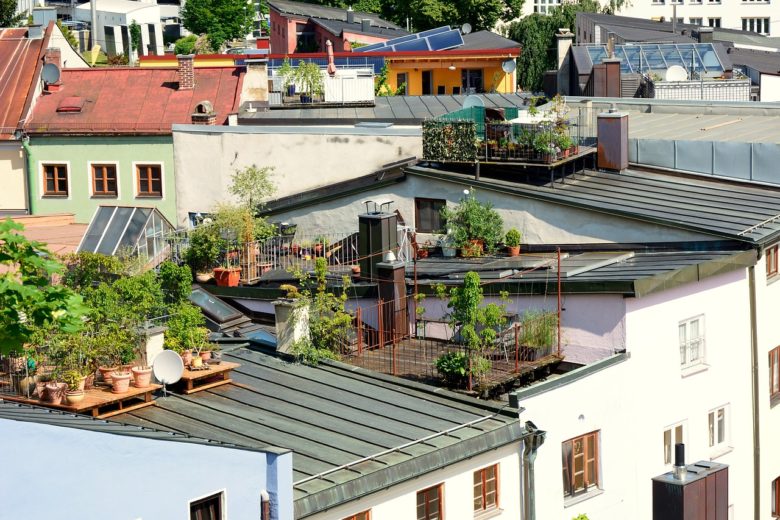
Eco-Friendly Home Designs for the Modern Minimalist
We are reader-supported. When you buy through links on our site, we may earn affiliate commission.
Clear, open space, clean lines, natural lighting and pieces that serve multiple functions: Sounds eerily environmental and sustainable, doesn’t it? A reflection of mother nature at her best. In stark contrast to the shock factor and plasticity of traditional minimalistic design, today’s trends pull directly from the great outdoors and, as a result, are almost entirely symbiotic with modern eco-friendly home designs.
Simplify Sustainability
Minimalistic design seeks to reduce living space to its necessary elements with a distinct emphasis on simplicity. In the back-to-basics scheme of things, minimalism is so low-impact it screams of eco-influence. As the trends of modern minimalism and eco-friendliness collide, results are striking, innovative — and, unsurprisingly, sustainable.
Open up
Rooms with open-space voids and clear pathways create a natural flow. Air circulates well through an uncluttered floor plan and supports efficient heating and cooling methods. Clean interior lines allow a few stark furnishings to stand out. Eco-friendly pieces that use organic fabrics and natural materials reflect desired simplicity and create a unified effect with the outdoors. Increasingly, retail companies offer ethically made environmental lines from which to choose.
Top It Off
The characteristic rectangular or chunky room parameters of minimalistic design often lend credence to exciting green roof options. Flat or gently sloping roofs are perfect for the installation of cover plantings. Green roofs naturally insulate living space, reduce stormwater runoff, improve air quality and increase area biodiversity. Root networks help protect the longevity of a roof, even while the plants themselves add visual appeal. Regardless of roof pitch, solar panels continue to be a cost-efficient method to harness environmental power while staying true to clean-line design. In addition to the original large, square units, solar paneling is now available in classic shingles and innovative glass tile.
Keep It Light
Large, multiple windows throughout the home are paramount. They allow for infusion of light and invite the surrounding natural environment in. Cross-view windows create the perspective of widened living space. Keeping windows unadorned with coverings remains faithful to the minimal concept and can significantly lower heating and cooling costs — especially if you’ve chosen to install energy-efficient models.
Salvage Materials
If you are renovating or rebuilding, consider re-use of original foundation structure. It’s as economical as it is environmental when you can avoid razing the earth or clearing additional land. Cement, bricks, steel and glass make excellent eco-friendly building materials and can be adapted in numerous ways to support minimalist design. Whenever possible, salvage recycled materials like ceramics, aluminum and glass. Source out wood from fallen trees or old barns. Look into composite lumber made from compressed sawdust and rice husks. Search for suitable fixtures and pieces that were previously owned. You’ll save on manufacturing cost, even as you protect the planet’s resources!
Preserve Water
From Frank Lloyd Wright’s 1935 Fallingwater to the present, water has been a prominent element in minimal architecture. Reflective and fluid, water adds unique visual and sensorial draw. Water, as an eco-friendly element, can also be harvested and recycled for home use. In addition to traditional collection systems which catch water at the base of a structure in barrel-like containers, modern designs include roofs which slant to a center peak and direct water straight into the home.
Using Eco-Friendly Products
From a bold splash of color on the walls to creative effect lighting, modern minimalist homeowners have an arsenal of environmentally supportive products to choose from. Make sure to use paint that’s nontoxic, and preferably an all-natural option made from raw ingredients such as milk protein and lime. LED — light-emitting diode — bulbs are available for everything from table and floor lamps, recessed lighting, under kitchen cabinet tracks and outdoor area spots. They last eight to 25 times longer than incandescent bulbs and use only 25-30 percent of the energy. Today’s eco-friendly home designs put modern minimalists in prime position to maximize sustainable practices. After all, less is more!
Share on
Like what you read? Join other Environment.co readers!
Get the latest updates on our planet by subscribing to the Environment.co newsletter!
About the author

Jane Marsh
Starting from an early age, Jane Marsh loved all animals and became a budding environmentalist. Now, Jane works as the Editor-in-Chief of Environment.co where she covers topics related to climate policy, renewable energy, the food industry, and more.





